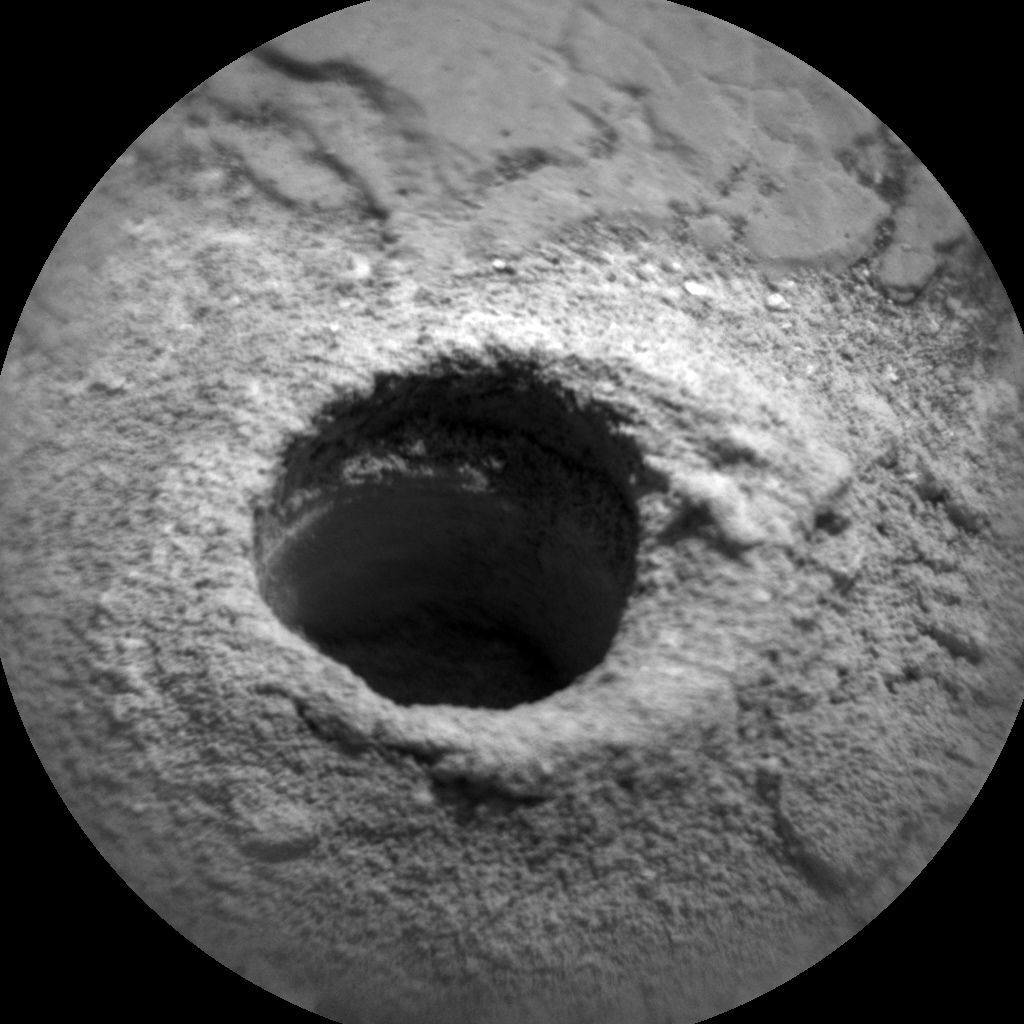2 min read

At the beginning of tactical planning today, we expected the weekend plan to include dropoff of some of the drill sample to the SAM instrument, but it was later recognized that the detailed requirements for the dropoff and SAM analysis could not be met today. So the arm and SAM activities had to be removed from the plan, freeing up power for other observations. This made for a stressful day for me as SOWG Chair, but MSL will be busy gathering important data over the upcoming holiday weekend. Planning is no longer restricted, so Saturday will be a "soliday" and we are planning three sols of activities to get the rover through Labor Day.
On Sol 2874, ChemCam will measure the chemistry of the atmosphere above Gale Crater by looking upward and acquiring spectra. Then ChemCam will fire its laser at the wall of the "Mary Anning 3" drill hole and at a soil target named "Insh Marshes." After the Right Mastcam takes pictures of the ChemCam targets, Mastcam will acquire a stereo mosaic to extend the coverage of the area in front of the rover. Navcam will then search for dust devils and, later that evening, take images of the sky for calibration. Similarly, just after sunset, the ChemCam RMI will take images of the sky above the rover to check the camera's calibration.
The second sol (2875) was originally filled with arm and SAM activities, and after they were removed from the plan there was room for other activities, so we added a long DAN passive observations and some engineering checks to go along with the usual REMS atmospheric measurements. On Sol 2876, Mastcam will look for changes in the sandy "Upper Ollach" area and take some pictures of the rover deck to look for changes there as well. Then ChemCam will analyze the chemistry of rock targets "Njuggleswater" and "Rocabarrigh" and the Right Mastcam will image them as well. Don't ask me how to pronounce those names! Finally, during the morning of 2877, Navcam will search for clouds and Mastcam will measure the opacity of dust in the atmosphere.
Written by Ken Herkenhoff, Planetary Geologist at USGS Astrogeology Science Center







